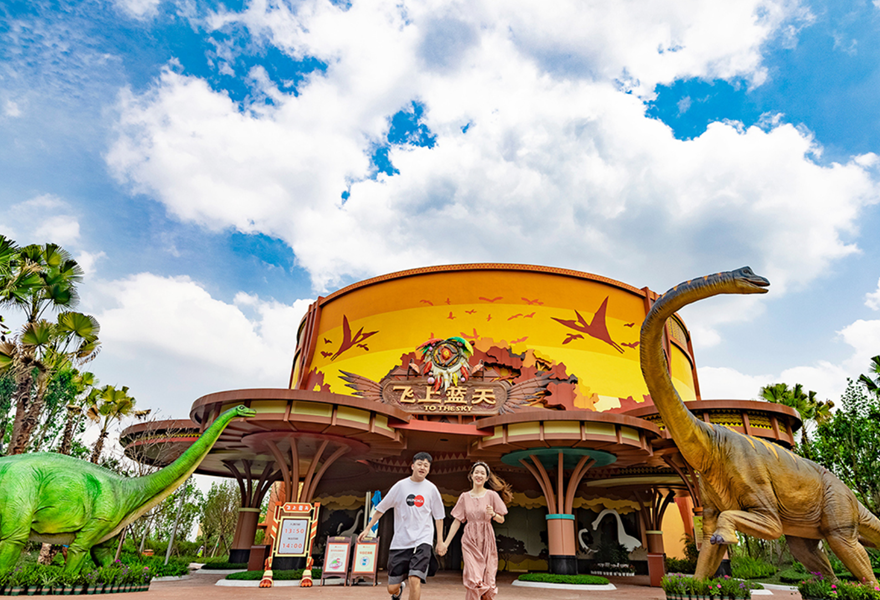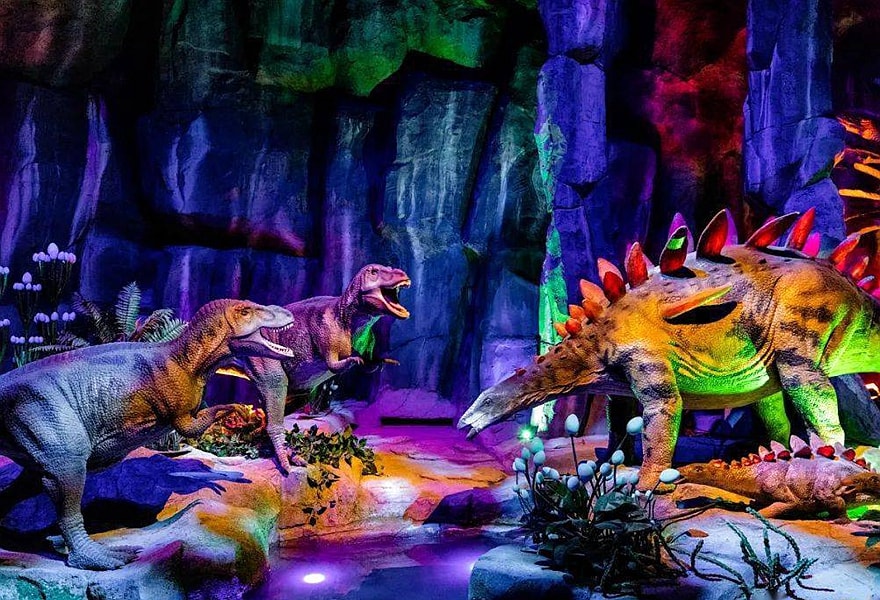News
Dinosaur-themed Amusement Park Operation Plan
In a commercial plaza, attracting customers’ attention and meeting their needs is crucial. A 2000-square-meter space provides ample room to create a unique dinosaur-themed amusement park. This article will explore how to integrate creative design, educational outreach, interactive entertainment, and business operations to achieve sustainable profitability for the project.

Project Planning and Design
Theme Positioning:
Combining the mysterious allure of dinosaurs, we aim to create an adventure-filled, interactive, and educational amusement park. Utilizing a beautiful environment, vivid exhibits, and engaging games to attract customers of different age groups.
Area Division – The amusement park can be divided into several zones:
- Dinosaur Exploration Zone: Featuring lifelike animatronic dinosaurs with immersive elements such as lighting, sound effects, and animations to create a realistic dinosaur world. Visitors can have close encounters and take memorable photos.
- Science Education Zone: Incorporating multimedia displays, interactive experiences, dinosaur fossils, and other educational elements to allow visitors to learn about the history, evolution, and behavior of dinosaurs while having fun.
- Interactive Gaming Zone: Providing various dinosaur-themed game facilities and non-motorized products, including virtual reality dinosaur games with vibrating seats, dinosaur fossil excavation experiences, and dinosaur-themed mazes.
- Leisure Shopping Zone: Establishing a cafe, dinosaur-themed retail stores, and other facilities to meet various customer needs.
Environmental Sustainability:
Prioritizing environmental protection, energy conservation, and sustainable development during the construction process, such as using eco-friendly building materials, solar lighting, and landscaping.

Business Operation Strategy
- Ticket System: Implementing a ticketing system with different pricing for various age groups. Offering limited-time discounts during pre-sale periods to attract more visitors.
- Membership Cards: Introducing membership cards with benefits such as discounts, priority ticketing, and participation in events to increase customer loyalty and return rates.
- Brand Collaboration: Collaborating with well-known brands and IPs to organize joint online and offline activities, co-branded products, etc., to enhance visibility and attraction.
- Online Promotion: Utilizing social media, short videos, live streaming, etc., to invite influencers and enthusiasts to experience and share their thoughts, expanding the park’s influence.
- Peripheral Products: Developing dinosaur-themed merchandise such as plush toys, T-shirts, books, etc. Visitors can purchase these items and take them home, creating an additional revenue stream.
- Special Events: Hosting regular dinosaur-themed events, such as dinosaur knowledge contests, dinosaur costume shows, and fossil excavation camps, to engage visitors, enhance satisfaction, and generate positive word-of-mouth.

Profit Forecast and Return on Investment
Revenue Sources: Major revenue sources include ticket sales, membership fees, peripheral product sales, brand collaborations, and event income.
Cost Analysis: Costs include venue rental, facility construction, operational management, marketing promotion, etc. With initial high investment, the expectation is to achieve a return on investment within 2-3 years.
Profit Forecast: Based on market research and operational data from similar projects, the annual revenue of the dinosaur-themed amusement park is expected to reach millions of dollars. As brand recognition increases and operational strategies are optimized, the profit potential will gradually expand.
Risk Assessment and Mitigation Measures
Market Competition: The dinosaur-themed amusement park may face market competition. Continuous innovation, improved service quality, and differentiation strategies should be implemented to enhance market competitiveness.
Policy Regulations: Keeping abreast of changes in industry policies and regulations to ensure compliant operations.
Safety Accidents: Strengthening maintenance and inspection of facilities to prevent accidents. Simultaneously, developing emergency plans to enhance the ability to respond to unforeseen events.
Customer Satisfaction: Continuously monitoring customer needs and satisfaction, optimizing products and services based on market feedback to increase customer satisfaction.

Conclusion
Through innovative design, interactive experiences, rich educational content, and flexible business operation strategies, the dinosaur-themed amusement park will become a new highlight in the commercial plaza. The project has promising market prospects and profit potential, making it worthy of investor attention. However, attention should also be given to changes in market competition, policy regulations, customer needs, etc., to continuously optimize the project and achieve sustainable development.
We hope this article has been helpful to you. If you would like to discuss further or inquire about our animatronic products, please feel free to contact us.